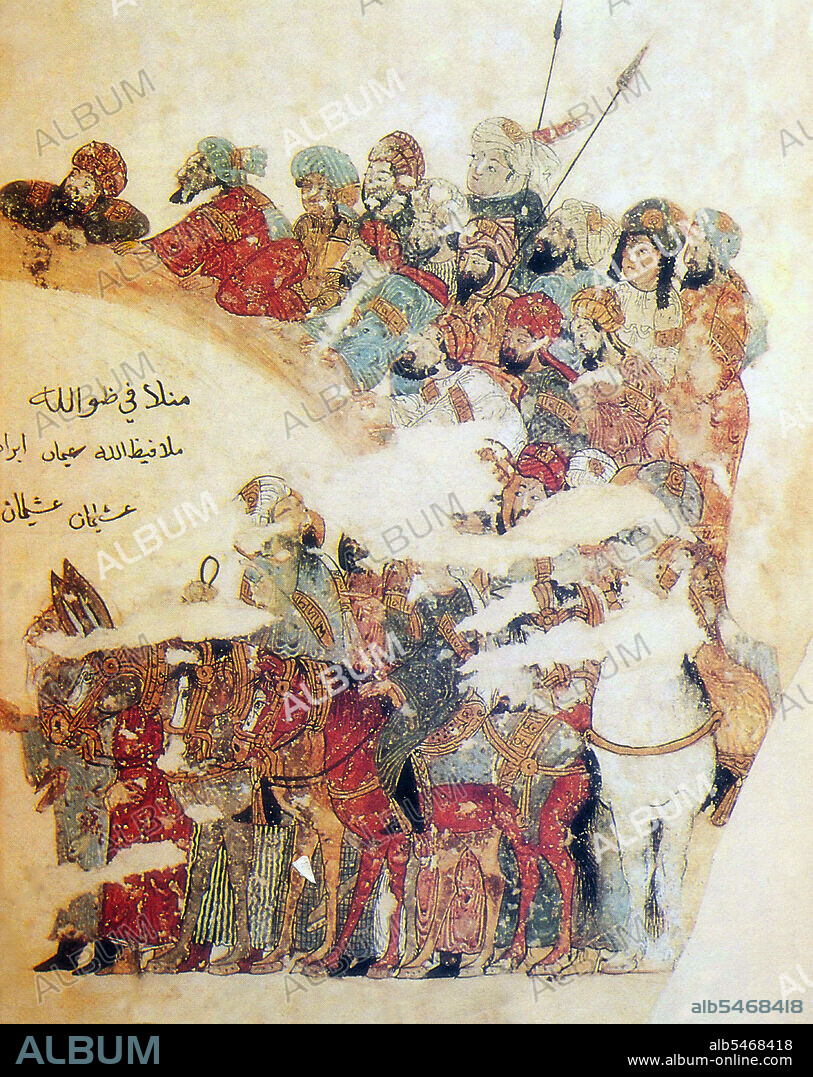alb5468418
A Miniature by Yahya ibn Mahmud al-Wasiti,1237 CE.

|
Ajouter à une autre Lightbox |
|
Ajouter à une autre Lightbox |



Avez-vous déjà un compte? S'identifier
Vous n'avez pas de compte ? S'inscrire
Acheter cette image

Titre:
A Miniature by Yahya ibn Mahmud al-Wasiti,1237 CE.
Légende:
Traduction automatique: Yahya ibn Mahmod al-Wasiti était un artiste arabe islamique du XIIIe siècle. Al-Wasiti est né à Wasit, dans le sud de l'Irak. Il était connu pour ses illustrations du Maqam d'al-Hariri. Les Maqama (littéralement « assemblées ») sont un genre littéraire (à l'origine) arabe de prose rimée avec des intervalles de poésie dans lesquels l'extravagance rhétorique est remarquable. L'auteur du Xe siècle Badi' al-Zaman al-Hamadhani aurait inventé cette forme, qui a été étendue par al-Hariri de Bassorah au siècle suivant. Le maqamat des deux auteurs est centré sur des personnages escrocs dont les errances et les exploits en s'adressant à des assemblées de puissants sont racontés par un narrateur. Les manuscrits du Maqamat d'al-Hariri, anecdotes d'un vagabond espiègle Abu Zayd de Saruj, étaient fréquemment illustrés de miniatures.
Yahya ibn Mahmod al-Wasiti was a 13th-century Arab Islamic artist. Al-Wasiti was born in Wasit in southern Iraq. He was noted for his illustrations of the Maqam of al-Hariri. Maqama (literally 'assemblies') are an (originally) Arabic literary genre of rhymed prose with intervals of poetry in which rhetorical extravagance is conspicuous. The 10th century author Badi' al-Zaman al-Hamadhani is said to have invented the form, which was extended by al-Hariri of Basra in the next century. Both authors' maqamat center on trickster figures whose wanderings and exploits in speaking to assemblies of the powerful are conveyed by a narrator. Manuscripts of al-Hariri's Maqamat, anecdotes of a roguish wanderer Abu Zayd from Saruj, were frequently illustrated with miniatures.
Crédit:
Album / Pictures From History/Universal Images Group
Autorisations:
Modèle: Non - Propriété: Non
Questions sur les droits?
Questions sur les droits?
Taille de l'image:
3700 x 4662 px | 49.4 MB
Taille d'impression:
31.3 x 39.5 cm | 12.3 x 15.5 in (300 dpi)
Mots clés:
? NE • ANE • ANIMAL: CHEVAL • ANT. OR.: IRAK • ARABE • ARABIE • ARMES: LANCE • ART (CATÉGORIE) • ART • ART, PEINTURE • ASIE • ASIE, CONTINENT • BAUDET • BROCHE (CUISINE) • CHAPEAU TURBAN • CHEVAL • CHEVAUX • CONTINENT ASIE • HISOIRE • HISTOIRE • IRAK • IRAK, ANT. OR. • ISLAM • ISLAMIQUE • ISLMAM • JAVELOT • LANCE • LANCES • MUSULMAN • MUSULMANE • MUSUSLMAN • PEINTURE • RELIGION • TABLEAU • TABLEAUX • TURBAN • TURBANS • VETEMENT: TURBAN • YAHYA IBN MAHMUD AL-WASITI
 Pinterest
Pinterest Twitter
Twitter Facebook
Facebook Copier le lien
Copier le lien Email
Email
